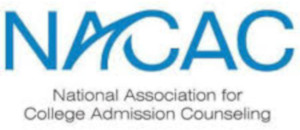The right reason to apply early decision:
“Professor Smith has a brain the size of a planet, we’ve been corresponding since I first heard her speak at this meeting and started doing data entry for her three years ago when I was in ninth grade and I read her book and it’s amazing and she teaches this course on psychopathology and there’s this amazing new program in neuroscience that isn’t offered hardly anywhere else and she’ll be my adviser and she knows all these other kids who are into reading and learning everything and I know all about the school and it’s a perfect match and if I got admitted I would be so happy and not care about going anywhere else.”
The wrong reason to apply early decision:
“My odds of ‘getting in’ will be better.”
Getting in, getting in, getting in. In the line of white Lexuses there is little other conversation. For years the rumor was: “Apply ED and you’re more likely to be admitted.” The thinking was as follows: “At HCC, only 10% of all applicants are admitted, but 20% of early decision applicants are.” Therefore, there is a clear advantage to being one of the early decision applicants.
Let’s think about this data for a second. Early decision kids get in a higher rate than regular application kids. No argument there. The numbers tell the story. But why? What is there’s something different about the ED kids? What if the populations aren’t equal? What if the ED kids are, say, nine feet tall and they all play basketball. What if the coaches for these nine feet tall ED kids tell them to file their applications early and thereby get the jump on the admissions process?*
In fact, there is a difference between ED kids and regular application kids. Colleges say the ED kids are better. How so? How are they better? What is the difference between an ED applicant and a regular kid? Are the ED kids smarter or more accomplished? Do they have better course selection or higher scores on norm referenced tests? Are they more active and involved in school activities? Do they make great contributions to student council, the school newspaper, the drama club?
Or are they different in some other, more subtle way that makes them more attactive to the admissions committee?
What if, for example, ED kids are wealthier? What is they’re less likely to qualify for need based aid? What if they’re more likely to be full-pay kids?
Here’s another factor: Colleges don’t want to be entertaining somebody else’s fiance. The marketing department, ahem, of course I meant the admissions department spends a tremendous amount of time, money and effort recruiting students. My colleagues in admissions attend fairs, design brochures, send postcards, conduct interviews, give tours, read applications, answer phone calls and travel around the country. An ED student is a “Buy One, Get One” proposition. One admitted student equals one paying student. A student who is admitted regular decision has to “yield,” that is, show up. A student who applied to seven schools and is admitted to three only shows up at one. At the other two schools where she was admitted, she did not yield. Those other two schools wish she had applied ED so they would have been sure to get her. They invested in courting her. But she married
somebody else.
Good reason to apply ED: This school is where I belong, what I know, where I fit in, where I match.
Bad reason to apply ED: This is the school where I won’t be happy, where I will fail.
* Basketball kids get the jump on admissions. Jump. Get it? Sorry.


